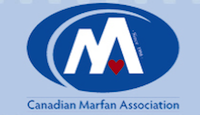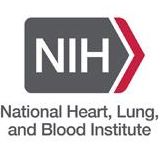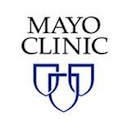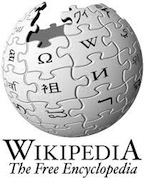
Resources
The National Heart, Lung and Blood Institute provides a basic overview of Marfan Syndrome, including information on: causes, who is at risk, signs and symptoms, diagnosis, treatment options, living with Marfan, clinical trials, and outside resources.

Mayo Clinic provides a detailed definition of Marfan Syndrome, including symptoms, causes, risk factors, complications, preparing for your appointment, tests and diagnosis, treatments and drugs, lifestyle and home remedies, and coping and support.
Wikipedia can be used when finding some general information about Marfan Syndrome. It breaks it down into a few basic categories: Signs and Symptoms, Pathogenesis, Diagnosis, Management, Prognosis, Epidemiology, History, Society and Culture, and References,
 Before its founding in 1981, Marfan syndrome was largely unknown or misunderstood. Tireless efforts have led to many life-changing advances in the fight for victory over Marfan syndrome and related disorders.
The Marfan Syndrome Foundation works to advance the research for treatments that save lives and dramatically enhance quality of life for affected people. They provide a supportive community for everyone affected by Marfan syndrome and related disorders.
Before its founding in 1981, Marfan syndrome was largely unknown or misunderstood. Tireless efforts have led to many life-changing advances in the fight for victory over Marfan syndrome and related disorders.
The Marfan Syndrome Foundation works to advance the research for treatments that save lives and dramatically enhance quality of life for affected people. They provide a supportive community for everyone affected by Marfan syndrome and related disorders.
 The Canadian Marfan Association (CMA) is a national charitable organization dedicated to saving lives and helping Marfan patients live a good quality of life. They are the only Association in Canada helping Marfan patients and the most reliable source for current and accurate information about Marfan syndrome.
The Canadian Marfan Association (CMA) is a national charitable organization dedicated to saving lives and helping Marfan patients live a good quality of life. They are the only Association in Canada helping Marfan patients and the most reliable source for current and accurate information about Marfan syndrome.
 The International Federation of Marfan Syndrome Organizations (IFMSO) was formally founded in 1992 at the Second International Symposium on the Marfan Syndrome in San Francisco, California. The purposes of IFMSO are to:
The International Federation of Marfan Syndrome Organizations (IFMSO) was formally founded in 1992 at the Second International Symposium on the Marfan Syndrome in San Francisco, California. The purposes of IFMSO are to:
 Founded in 1988, the Marfan Trust funds research into the cause and prevention of Marfan Syndrome, a dominantly inherited cardiac disorder which also affects eyes and skeleton. Their website has information on Marfan syndrome, research projects, publications and ways to donate.
Founded in 1988, the Marfan Trust funds research into the cause and prevention of Marfan Syndrome, a dominantly inherited cardiac disorder which also affects eyes and skeleton. Their website has information on Marfan syndrome, research projects, publications and ways to donate.
 The Stanford University Center for Marfan Syndrome and Aortic Disorders is the largest of its kind in California and among the nation's leading centers for the diagnosis and treatment of Marfan syndrome.
At Stanford Hospital, the Marfan Syndrome center is multidisciplinary, ensuring that patients with Marfan syndrome and aortic disorders have access to comprehensive diagnostic and management services from specialists in cardiology, cardiovascular surgery, ophthalmology, orthopedics and genetics.
The Stanford University Center for Marfan Syndrome and Aortic Disorders is the largest of its kind in California and among the nation's leading centers for the diagnosis and treatment of Marfan syndrome.
At Stanford Hospital, the Marfan Syndrome center is multidisciplinary, ensuring that patients with Marfan syndrome and aortic disorders have access to comprehensive diagnostic and management services from specialists in cardiology, cardiovascular surgery, ophthalmology, orthopedics and genetics.
 Maya is a mother of two boys (one who has autism and one who has Marfan syndrome). She writes about her personal experiences having Marfan and having a child with Marfan. This blog is not intended to take the place of medical advice from your doctor. Always consult a physician with questions about your health.
Maya is a mother of two boys (one who has autism and one who has Marfan syndrome). She writes about her personal experiences having Marfan and having a child with Marfan. This blog is not intended to take the place of medical advice from your doctor. Always consult a physician with questions about your health.
Katie blogs about life with a chronic illness and chronic pain, from a 19 year old’s perspective. Tying into that she writes about Marfan Syndrome and connective tissue disorders and day to day life living with them.
 Allison and her 3 brothers have marfan syndrome. Her youngest daughter and nephew have been diagnosed as well. She blogs to raise awareness, and to hopefully help others who may be dealing with this. She not only shares her family's experiences but also the stories of others.
Allison and her 3 brothers have marfan syndrome. Her youngest daughter and nephew have been diagnosed as well. She blogs to raise awareness, and to hopefully help others who may be dealing with this. She not only shares her family's experiences but also the stories of others.
12 Resources for Marfan Syndrome Awareness Month
February is Marfan Awareness Month. As Marfan Syndrome is quite rare many people have not heard of this condition. Take some time this month to learn about Marfan, and find ways to help the cause. Here are 12 resources you should know about for Marfan Syndrome Awareness Month.What is Marfan Syndrome?
Marfan syndrome is a genetic condition in which your body's connective tissue is abnormal. About 1 out of every 5,000 people in the United States has Marfan syndrome. Marfan syndrome has a range of expressions, from mild to severe. The most serious complications are defects of the heart valves and aorta. It may also affect the lungs, the eyes, the dural sac surrounding the spinal cord, the skeleton and the hard palate.What are the Signs and Symptoms?
Marfan syndrome often affects the long bones of the body. This can lead to signs, or traits, such as:- A tall, thin build.
- Long arms, legs, fingers, and toes and flexible joints.
- A spine that curves to one side. This condition is called scoliosis.
- A chest that sinks in or sticks out. These conditions are called pectus excavatum and pectus carinatum, respectively.
- Teeth that are too crowded.
- Flat feet.
- Stretch marks on the skin also are a common trait in people who have Marfan syndrome. Stretch marks usually appear on the lower back, buttocks, shoulders, breasts, thighs, and abdomen.
- Skeletal Symptoms:
- Nearsightedness and astigmatism
- Fatigue, shortness of breath, heart palpitations, racing heart beats, or angina pectoris with pain radiating to the back, shoulder, or arm
What Treatment Options are There?
Marfan syndrome has no cure. However, treatments can help delay or prevent complications, especially when started early. Marfan syndrome can affect many parts of your body, including your heart, bones and joints, eyes, nervous system, and lungs. At present, the syndrome is treated by simply addressing each issue as it arises and, in particular, preventative medication even for young children to slow progression of aortic dilation if such exists.Resources for Marfan Syndrome
General Information
 1. National Heart, Lung, and Blood Institute
1. National Heart, Lung, and Blood Institute
The National Heart, Lung and Blood Institute provides a basic overview of Marfan Syndrome, including information on: causes, who is at risk, signs and symptoms, diagnosis, treatment options, living with Marfan, clinical trials, and outside resources.
2. National Human Genome Research Institute
Topics at the National Human Genome Research Institute include:
- What is Marfan syndrome?
- What are the symptoms of Marfan syndrome?
- How is Marfan syndrome diagnosed?
- What is the treatment for Marfan syndrome?
- Is Marfan syndrome inherited?
- Clinical Research on Marfan Syndrome
- Additional Resources for Marfan Syndrome
 3. Mayo Clinic
3. Mayo Clinic
Mayo Clinic provides a detailed definition of Marfan Syndrome, including symptoms, causes, risk factors, complications, preparing for your appointment, tests and diagnosis, treatments and drugs, lifestyle and home remedies, and coping and support.
 4. Wikipedia
4. Wikipedia
Wikipedia can be used when finding some general information about Marfan Syndrome. It breaks it down into a few basic categories: Signs and Symptoms, Pathogenesis, Diagnosis, Management, Prognosis, Epidemiology, History, Society and Culture, and References,
Marfan Syndrome Organizations and Resources
5. The Marfan Foundation
 Before its founding in 1981, Marfan syndrome was largely unknown or misunderstood. Tireless efforts have led to many life-changing advances in the fight for victory over Marfan syndrome and related disorders.
The Marfan Syndrome Foundation works to advance the research for treatments that save lives and dramatically enhance quality of life for affected people. They provide a supportive community for everyone affected by Marfan syndrome and related disorders.
Before its founding in 1981, Marfan syndrome was largely unknown or misunderstood. Tireless efforts have led to many life-changing advances in the fight for victory over Marfan syndrome and related disorders.
The Marfan Syndrome Foundation works to advance the research for treatments that save lives and dramatically enhance quality of life for affected people. They provide a supportive community for everyone affected by Marfan syndrome and related disorders.
6. Canadian Marfan Association
 The Canadian Marfan Association (CMA) is a national charitable organization dedicated to saving lives and helping Marfan patients live a good quality of life. They are the only Association in Canada helping Marfan patients and the most reliable source for current and accurate information about Marfan syndrome.
The Canadian Marfan Association (CMA) is a national charitable organization dedicated to saving lives and helping Marfan patients live a good quality of life. They are the only Association in Canada helping Marfan patients and the most reliable source for current and accurate information about Marfan syndrome.
7. Marfan Worldwide
 The International Federation of Marfan Syndrome Organizations (IFMSO) was formally founded in 1992 at the Second International Symposium on the Marfan Syndrome in San Francisco, California. The purposes of IFMSO are to:
The International Federation of Marfan Syndrome Organizations (IFMSO) was formally founded in 1992 at the Second International Symposium on the Marfan Syndrome in San Francisco, California. The purposes of IFMSO are to:
- Share current, accurate information about the Marfan syndrome worldwide and facilitate international communication among medical professionals and the general public.
- Establish standards for diagnosis and treatment of the Marfan syndrome.
- Support and foster research throughout the world and facilitate communication with research centers and researchers worldwide.
8. Marfan Trust UK
 Founded in 1988, the Marfan Trust funds research into the cause and prevention of Marfan Syndrome, a dominantly inherited cardiac disorder which also affects eyes and skeleton. Their website has information on Marfan syndrome, research projects, publications and ways to donate.
Founded in 1988, the Marfan Trust funds research into the cause and prevention of Marfan Syndrome, a dominantly inherited cardiac disorder which also affects eyes and skeleton. Their website has information on Marfan syndrome, research projects, publications and ways to donate.
9. Stanford University Center for Marfan Syndrome and Aortic Disorders
 The Stanford University Center for Marfan Syndrome and Aortic Disorders is the largest of its kind in California and among the nation's leading centers for the diagnosis and treatment of Marfan syndrome.
At Stanford Hospital, the Marfan Syndrome center is multidisciplinary, ensuring that patients with Marfan syndrome and aortic disorders have access to comprehensive diagnostic and management services from specialists in cardiology, cardiovascular surgery, ophthalmology, orthopedics and genetics.
The Stanford University Center for Marfan Syndrome and Aortic Disorders is the largest of its kind in California and among the nation's leading centers for the diagnosis and treatment of Marfan syndrome.
At Stanford Hospital, the Marfan Syndrome center is multidisciplinary, ensuring that patients with Marfan syndrome and aortic disorders have access to comprehensive diagnostic and management services from specialists in cardiology, cardiovascular surgery, ophthalmology, orthopedics and genetics.
Blogs
10. Musings of a Marfan Mom
 Maya is a mother of two boys (one who has autism and one who has Marfan syndrome). She writes about her personal experiences having Marfan and having a child with Marfan. This blog is not intended to take the place of medical advice from your doctor. Always consult a physician with questions about your health.
Maya is a mother of two boys (one who has autism and one who has Marfan syndrome). She writes about her personal experiences having Marfan and having a child with Marfan. This blog is not intended to take the place of medical advice from your doctor. Always consult a physician with questions about your health.
 11. Tissue Tales
11. Tissue Tales
Katie blogs about life with a chronic illness and chronic pain, from a 19 year old’s perspective. Tying into that she writes about Marfan Syndrome and connective tissue disorders and day to day life living with them.
12. Living with Marfan Syndrome
 Allison and her 3 brothers have marfan syndrome. Her youngest daughter and nephew have been diagnosed as well. She blogs to raise awareness, and to hopefully help others who may be dealing with this. She not only shares her family's experiences but also the stories of others.
Allison and her 3 brothers have marfan syndrome. Her youngest daughter and nephew have been diagnosed as well. She blogs to raise awareness, and to hopefully help others who may be dealing with this. She not only shares her family's experiences but also the stories of others.
Top Photo Credit: Facebook/Marfan Foundation


